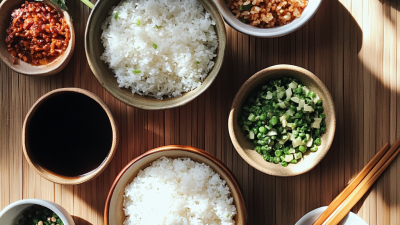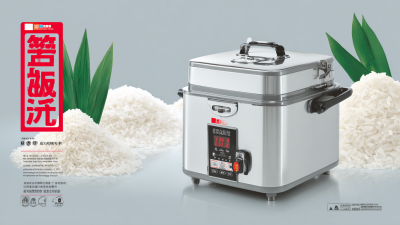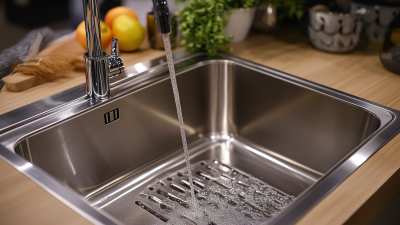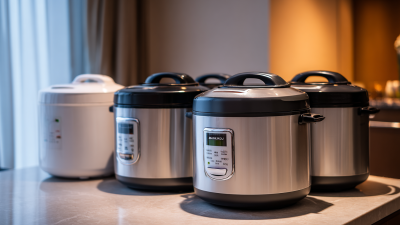- +86-13631182173
- sales@zsqeelin.com
- 8613631182173
In the realm of modern cooking, the Electric Rice Cooking Machine has revolutionized the way we prepare one of the world's staple foods. According to a report by Research and Markets, the global rice cooker market is projected to grow at a CAGR of 6.4% over the next five years, highlighting the increasing consumer preference for convenience and precision in cooking.
These machines not only save time but also consistently deliver perfectly cooked rice by employing advanced technology that controls temperature and moisture levels. With features such as fuzzy logic, induction heating, and various cooking modes, the Electric Rice Cooking Machine caters to diverse culinary needs, making it an indispensable tool in households worldwide.
This growing trend underscores a broader shift towards smart kitchen appliances that enhance cooking outcomes while simplifying the process, ultimately aiming to satisfy the demanding tastes of the contemporary consumer.

Electric rice cookers have revolutionized the way we prepare rice, taking the guesswork and timing issues out of cooking. At the core of their operation lies a simple yet effective mechanism: when you add rice and water, the rice cooker uses a heating element to bring the water to a boil. Once it reaches a certain temperature, a thermostat detects that the water has evaporated and the temperature begins to rise above the boiling point. This signals the cooker to switch to a keep-warm mode, ensuring that the rice is perfectly cooked and ready to serve.
Tip: For fluffy rice, rinse the grains under cold water before cooking. This removes excess starch, preventing the rice from becoming gummy or sticky. Adjusting the water-to-rice ratio is crucial as well; most rice cookers recommend a 1:1.5 ratio for white rice, while brown rice generally requires more water.
Understanding the technological features of your rice cooker can further enhance your cooking. Many modern machines include specialized settings for different types of rice, such as jasmine or sushi rice. This tailored approach ensures optimal cooking times and temperatures for each variety, resulting in perfectly cooked rice every time.
Tip: Avoid opening the lid during the cooking process. It’s important to maintain a consistent steam environment for ideal rice cooking.

When choosing the right electric rice cooker, consider the various types available, each catering to different cooking needs and preferences. Basic rice cookers utilize a simple on/off mechanism, perfect for individuals who want a straightforward approach to cooking rice. On the other hand, advanced models often include settings for different rice types, such as jasmine, brown, or sushi rice, enabling precise control over cooking times and temperatures for optimal results.
For those who seek versatility in the kitchen, multi-cookers can be a fantastic option. These appliances not only cook rice but also serve as slow cookers, pressure cookers, and more, offering a convenient all-in-one solution for busy home cooks. When selecting a cooker, assess the capacity that suits your household size, as models vary significantly—from smaller versions for singles to larger options for families.
**Tips:** Always rinse your rice before cooking to remove excess starch, which helps prevent stickiness and enhances the texture. Additionally, consider investing in a model with a timer function so you can enjoy perfectly cooked rice whenever you need it, without constant monitoring.
This chart illustrates the popularity of various types of electric rice cookers based on a scale of 100. The Basic Rice Cooker leads the popularity chart, while other variants like Multi-functional Rice Cooker have lower representation. Understanding these preferences can help you choose the right rice cooker that meets your needs.
The art of cooking rice, often perceived as simple, is grounded in the intricate science of temperature and moisture control. According to the United States Department of Agriculture (USDA), the optimal cooking temperature for rice is around 200°F (93°C). This temperature ensures the starch granules absorb water efficiently, resulting in perfectly cooked rice. Electric rice cooking machines are designed to monitor and adjust temperature, delivering consistent results that can be difficult to replicate on a stovetop.
Moisture control is equally crucial in the rice cooking process. A study published in the Journal of Food Science reveals that the ideal water-to-rice ratio varies between rice types. For instance, long-grain rice typically requires a 1:2 ratio, while short-grain rice may only need a 1:1.25 ratio. Electric rice cookers automate this process, measuring water levels precisely to provide optimal hydration, which not only affects the texture but also enhances the absorption of flavors. This accuracy in moisture control is one of the defining features of contemporary rice cooking machines, making them essential for both home cooks and professional chefs alike.

Modern rice cooking machines have revolutionized the way we prepare this staple food, incorporating innovative features that ensure perfect results every time. One of the most common advancements is the multi-function capability of these machines. Beyond cooking rice, many models can steam vegetables, cook porridge, or even bake cakes, making them versatile appliances for any kitchen. Additionally, advanced fuzzy logic technology allows these machines to automatically adjust cooking times and temperatures based on the type of rice being used, ensuring optimal texture and flavor.
When choosing a rice cooker, consider looking for features such as a keep-warm function, which maintains the ideal serving temperature without overcooking the rice. Another valuable tip is to select a model with a non-stick inner pot, which not only makes for easy cleaning but also prevents rice from sticking, ensuring you get every grain out effortlessly.
It's also worth exploring rice cookers with timers, allowing you to set them in advance. This feature enables you to wake up or come home to perfectly cooked rice, ready to complement your meals. With these innovations, cooking rice has become an enjoyable and foolproof experience, perfect for both seasoned cooks and beginners alike.
Achieving perfect rice consistency is an art that many home cooks aspire to master. Electric rice cooking machines have become essential tools in modern kitchens, streamlining the process and enhancing the final result. According to the American Rice Federation, nearly 60% of American households now own a rice cooker, reflecting its growing popularity and the reliance on technology to achieve culinary excellence. The science behind these machines lies in their ability to regulate temperature and cooking time precisely, ensuring that the rice absorbs the optimal amount of water without becoming mushy.
To achieve perfect rice every time, there are a few tips one can follow. First, the water-to-rice ratio is crucial; most experts recommend a ratio of 1:1.5 for long-grain rice, while short-grain varieties may require slightly less. Secondly, rinsing your rice before cooking can remove excess starch, leading to fluffier grains. A study from the National Rice Research Institute indicates that appropriately rinsed rice not only improves texture but can also reduce cooking time by up to 15%, optimizing energy use. Finally, allowing the rice to rest post-cooking—typically for about 10 minutes—enables steam to evenly distribute, resulting in consistently fluffy rice every time.






